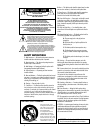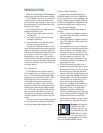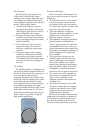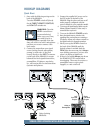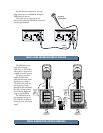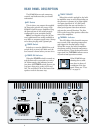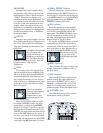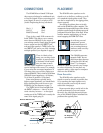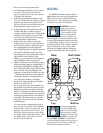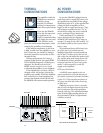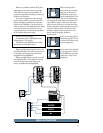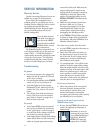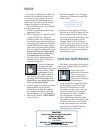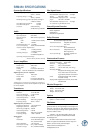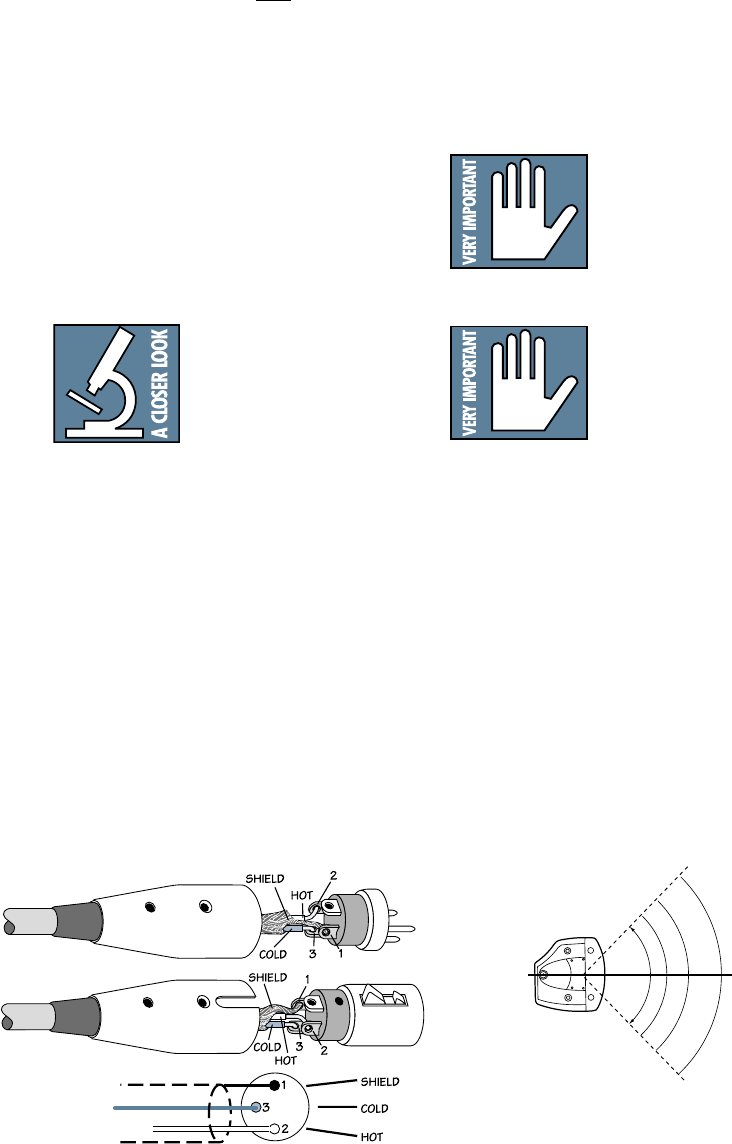
10
PLACEMENT
The SRM450 active speakers are de-
signed to sit on the floor, a tabletop, or to fit
on a standard tripod speaker stand. They
can also be suspended by the rigging points,
shown opposite.
You can lay the cabinet down on its side
and use the SRM450 as a floor monitor. The
asymmetrical trapezoidal shape of the cabinet
provides a perfect angle for aiming up toward
performers from the front of the stage. When
used for monitor applications, we recom-
mend engaging the LOW CUT filter.
As with any powered
components, protect
them from moisture. If
you are setting them up
outdoors, make sure they
are under cover if you expect rain.
The SRM450 generates
magnetic fields. Do not
place them closer than two
or three feet (60–100 cm)
from TV or computer
monitors. Check the screen for any change
in color or distortion. Do not place any
magnetic audio or video tapes or computer
discs near the SRM450s.
Room Acoustics
The SRM450 active speakers are de-
signed to sound as neutral as possible; that
is, to reproduce the input signal as accu-
rately as possible, monitoring the sound
rather than changing it.
Room acoustics play a crucial role in the
overall performance of a sound system.
However, the wide high-frequency disper-
sion of the SRM450 helps to minimize the
problems that typically arise.
Balanced XLR Connectors
CONNECTIONS
The SRM450 has a female XLR input
that accepts a balanced or unbalanced mic-
or line-level signal. When connecting a bal-
anced signal, be sure it’s wired per AES
(Audio Engineering Society) standards:
XLR
Hot (+) Pin 2
Cold (–) Pin 3
Shield (Ground) Pin 1
There is also a male XLR connector la-
beled THRU. This allows you to connect
more than one SRM450 to the output of
your mixing console. Simply plug the signal
source output into the first INPUT jack,
and patch that speaker’s THRU jack to the
next INPUT jack, and so on, daisy-chaining
multiple speakers (see diagram on page 6).
There is a limit to how
many you can daisy-chain
together. A general rule is
to maintain a load imped-
ance ten times or more
than the source impedance to prevent ex-
cessive loading on the source. For example,
if your mixer has an output impedance of
120 ohms, then you can daisy chain up to
sixteen SRM450s. This is a load of 1250 ohms
(SRM450 input impedance=20 kohms;
16 of these in parallel=1250 ohms).
Since microphones typically have a
higher output impedance, you should limit
daisy-chaining from a mic source to two
SRM450s (see the diagram on page 7).
The THRU jack is wired straight from
the INPUT connector — there is no elec-
tronic circuitry between — so the signal
coming out of the THRU jack is exactly the
same as the signal going in.
Top
90
0
Dispersion
up to 20 kHz
90
0



